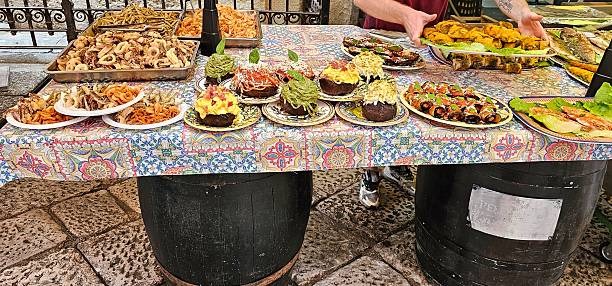Sicilian cuisine isn’t just regional cooking — it’s a form of cultural archaeology. To taste your way through Sicily is to confront the island’s complex past: colonization, poverty, migration, resistance, and reinvention. It’s history on a plate — and if you know where to look, you’ll find that every dish carries layers of meaning beyond the ingredients. You have to experience it — with your hands, with locals, and ideally, with time. Here’s how to explore Sicilian cuisine through authentic, meaningful personal experience that goes far deeper than the plate.
Cuisine as Cultural Survival
The first thing to understand is that Sicilian cooking evolved from constraint. For centuries, the island was passed between empires — each one leaving something behind: saffron from the Arabs, almonds from the Normans, chocolate via the Spanish. But the brilliance of Sicilian cooks was never about rare ingredients, but about transforming scarcity into invention.
Take caponata: a dish that looks simple — eggplant, vinegar, pine nuts — but tells a story of survival. Its sweet-sour flavor reflects a culture that had to preserve food before refrigeration. Its preparation — cooked ahead, served cold — mirrors a domestic rhythm built on pragmatism.
Chefs as Oral Historians
In Sicily, some of the most insightful “food tours” happen at their typical kitchen tables. Chefs, home cooks, pastry makers — all of them carry unrecorded stories.
In Modica, the chocolate is grainy because it never melted — a technique dating back to Aztec traditions brought over by the Spanish. In Noto, almond paste isn’t just dessert — it was once currency among convents. If you want to understand it, don’t Google. Sit down with a local pastry chef whose grandmother made it in secret during wartime, when sugar was contraband.
The Performance and the Process
While the Sicilian Taormina is often reduced to a view (yes, the view is worth the hype), but for those willing to dig beneath the obvious, it’s also a powerful entry point into the island’s culinary psyche.
You can take a private cooking session overlooking the Ionian Sea, yes — but the better version? One where the class starts in a vineyard on the slopes of Mount Etna, where volcanic soil is producing some of Europe’s most experimental wines. Then, back in town, your guide isn’t just showing you where to eat arancini — they’re tracing its migration from Arab street food to Italian festival staple.
In other words, discovering Taormina means learning to read food as a historical text, not just a tourist attraction.
Taste as Testimony
To eat in Sicily without understanding its history is like walking through a museum blindfolded. You might enjoy yourself, but you’ll miss the point. The flavors are rich, but their significance is richer.
Sicilian cuisine is not just delicious — it’s revealing. It tells the story of a crossroads island where survival and hospitality have always been intertwined. To experience it authentically, look for moments that feel unscripted: a handwritten recipe, a shared table, a taste of something you can’t name — yet.



